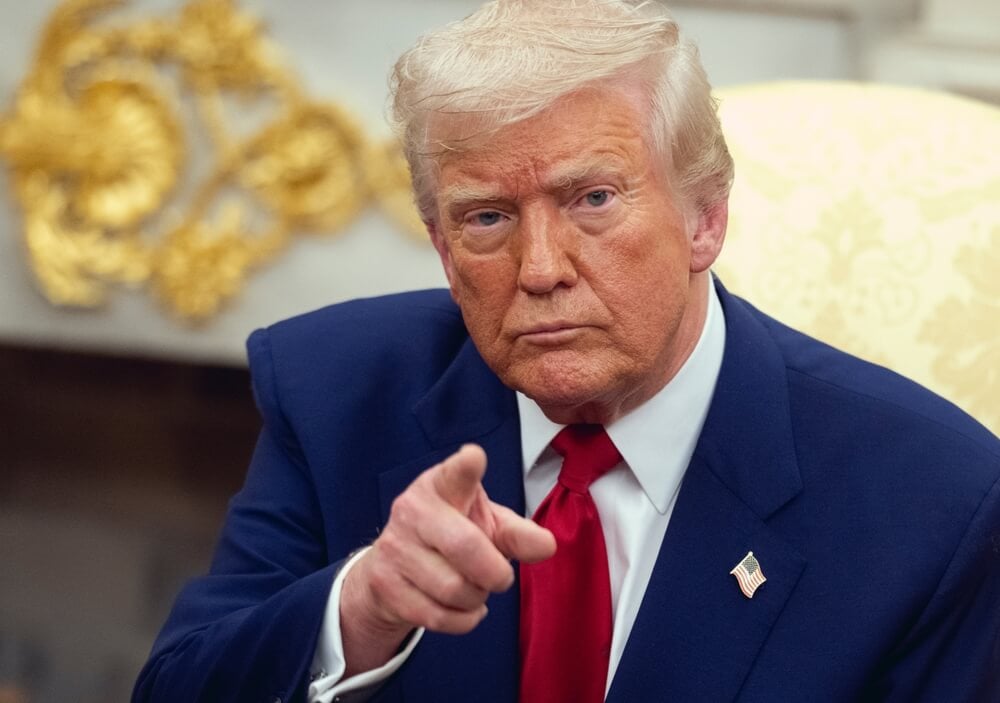Three months after President Donald Trump announced plans to impose sweeping new tariffs on most countries, the US economy appears surprisingly resilient.
The stock market has rebounded from its initial slump, inflation remains under control, and fears of a recession have receded – or at least they had before Trump announced a new 30% tariff on imports from Mexico and the European Union, two of America’s biggest trading partners.
In the months since Trump’s initial announcement, several countries have entered negotiations with the United States, offering concessions they had long resisted.
Many observers view this as evidence that Trump’s aggressive trade tactics are working and that economists may have overestimated the potential costs.
Yet this interpretation overlooks a critical detail: many of the tariffs that Trump announced over the past few months have not been fully implemented.
In fact, the administration has repeatedly backed down from its initial threats – a pattern so consistent that it has earned the acronym TACO: “Trump always chickens out.”
Bold proclamations followed by delays
Despite its outspoken distrust of experts – particularly economists, scientists, and health professionals – the Trump administration has consistently been attuned to financial markets.
Since early April, announcements of new or increased duties have repeatedly triggered stock-market declines.
In response, the administration has often softened its stance by issuing exemptions, delaying some tariffs, and renegotiating others, leading to quick rebounds in equity prices.
Announcements of bilateral deals have been met with investor optimism, while renewed threats of escalation have triggered sell-offs.
Investors no longer believe the administration will follow through on its threats
Until recently, this feedback loop has helped rein in the administration’s trade policies. But the latest escalation – including a 50% tariff on copper, higher-than-expected tariffs on goods from Vietnam, and stalled negotiations with the EU – has barely moved the markets, with equity prices remaining elevated.
The most plausible explanation is that investors no longer believe the administration will follow through on its threats. Instead, they see them as part of a now-familiar cycle: bold proclamations followed by delays or partial implementation.
“Boy who cried wolf” dynamic
Complacency, however, introduces a new kind of risk. If markets become desensitized to Trump’s tariff threats, they may no longer serve as an effective check on potentially harmful policies.
Freed from that constraint, Trump could be emboldened to move forward with measures his administration has so far been reluctant to implement.
It’s a classic “boy who cried wolf” dynamic. In the early stages, Trump’s aggressive rhetoric helped bring negotiating partners to the table without triggering the worst-case economic scenarios, largely because the market backlash acted as a deterrent.
But as investors increasingly dismiss his tariff threats, the likelihood that he will follow through on them grows.
Confronting the US directly would be costly
And if that happens, the long-feared consequences could finally materialize: higher consumer prices, reduced trade, disrupted supply chains, and slower long-term growth.
This dynamic extends beyond financial markets. Many countries that were once firmly committed to multilateralism are now pursuing bilateral deals with the US in the hope of avoiding punitive tariffs.
Some see these developments as vindication of the administration’s current approach – evidence that the US can use its economic power to reshape a system seen as unfavorable to American interests.
But the shift toward bilateralism is less an endorsement of Trump’s approach than a pragmatic response. Confronting the US directly would be costly. Finding themselves on increasingly hostile and unpredictable terrain, many governments are buying time and hedging their bets.
Empty noise
Such hedging can move in only one direction: away from the US and toward alternative trading partners, particularly China. For most countries, that is not the preferred outcome.
Vietnam, for example, has openly expressed its desire to strengthen ties with the US rather than deepen its reliance on China.
But as US trade policy grows more erratic, governments are increasingly being forced to choose between the two powers.
 The irony is that Trump’s efforts to bully foreign governments will ultimately diminish America’s global influence
The irony is that Trump’s efforts to bully foreign governments will ultimately diminish America’s global influence
The irony is that Trump’s efforts to bully foreign governments will ultimately diminish America’s global influence. Economic leverage, after all, depends on engagement.
The US can pressure trading partners today precisely because it remains deeply integrated into the global economy.
Consequently, US policymakers now find themselves in a double bind. In the short term, financial markets have mitigated the impact of Trump’s aggressive rhetoric by discouraging implementation of the policies that follow from it.
But if investors keep treating his threats as empty noise, they will ignore the wolf when it appears.
Moreover, given America’s central role in the global trading system, its retreat from multilateralism will drive other countries to seek alternatives and diversify their trade relationships.
As they become less dependent on the US market, America’s bargaining power will inevitably decline.
While the Trump administration’s strategy may appear to be working, the absence of immediate costs is not evidence of its long-term viability.
Instead, it is a sign that the warnings were heard and – for a time – heeded. If the administration ignores those warnings, economists’ dire predictions may come true.
Pinelopi Koujianou Goldberg, a former World Bank Group chief economist and editor-in-chief of the American Economic Review, is Professor of Economics at Yale University.